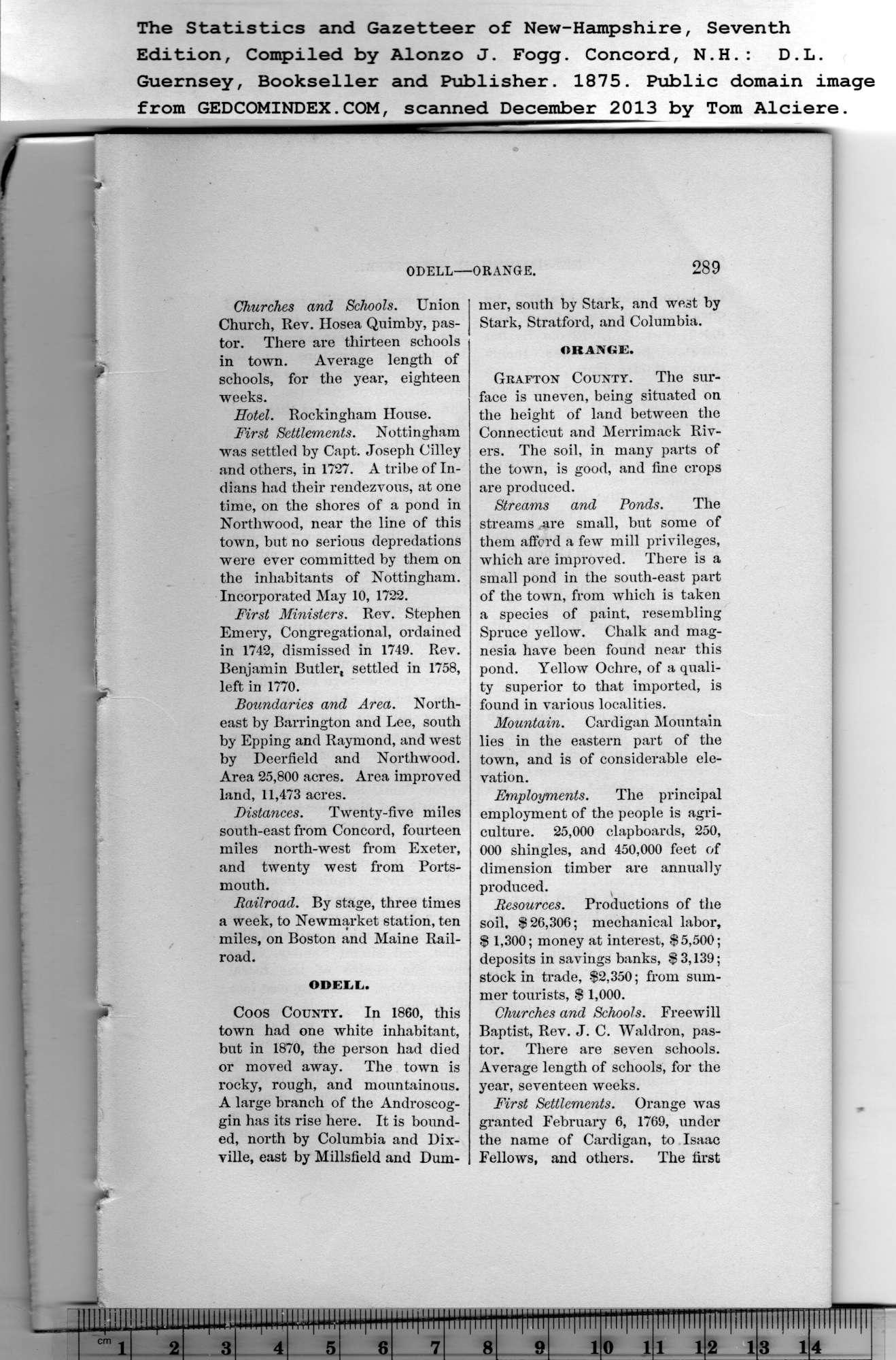|
Churches and Schools. Union
Church, Rev. Hosea Quimby, pas-
tor. There are thirteen schools
in town. Average length of
schools, for the year, eighteen
weeks.
Hotel. Rockingham House.
First Settlements. Nottingham
was settled by Capt. Joseph Cilley
and others, in 1727. A tribe of In-
dians had their rendezvous, at one
time, on the shores of a pond in
Northwood, near the line of this
town, but no serious depredations
were ever committed by them on
the inhabitants of Nottingham.
Incorporated May 10, 1722.
First Ministers. Rev. Stephen
Emery, Congregational, ordained
in 1742, dismissed in 1749. Rev.
Benjamin Butler, settled in 1758,
left in 1770.
Boundaries and Area. North-
east by Barrington and Lee, south
by Epping and Raymond, and west
by Deerfield and Northwood.
Area 25,800 acres. Area improved
land, 11,473 acres.
Distances. Twenty-five miles
south-east from Concord, fourteen
miles north-west from Exeter,
and twenty west from Ports-
mouth.
Railroad. By stage, three times
a week, to Newmarket station, ten
miles, on Boston and Maine Rail-
road.
ODELL.
Coos County. In 1860, this
town had one white inhabitant,
but in 1870, the person had died
or moved away. The town is
rocky, rough, and mountainous.
A large branch of the Androscog-
gin has its rise here. It is bound-
ed, north by Columbia and Dix-
ville, east by Millsfield and Dum-
mer, south by Stark, and west by
Stark, Stratford, and Columbia.
|
ORANGE.
Grafton County. The sur-
face is uneven, being situated on
the height of land between the
Connecticut and Merrimack Riv-
ers. The soil, in many parts of
the town, is good, and fine crops
are produced.
Streams and Ponds. The
streams are small, but some of
them afford a few mill privileges,
which are improved. There is a
small pond in the south-east part
of the town, from which is taken
a species of paint, resembling
Spruce yellow. Chalk and mag-
nesia have been found near this
pond. Yellow Ochre, of a quali-
ty superior to that imported, is
found in various localities.
Mountain. Cardigan Mountain
lies in the eastern part of the
town, and is of considerable ele-
vation.
Employments. The principal
employment of the people is agri-
culture. 25,000 clapboards, 250,
000 shingles, and 450,000 feet of
dimension timber are annually
produced.
Resources. Productions of the
soil, $26,306; mechanical labor,
$ 1,300; money at interest, $5,500;
deposits in savings banks, $ 3,139;
stock in trade, $2,350; from sum-
mer tourists, $ 1,000.
Churches and Schools. Freewill
Baptist, Rev. J. C. Waldron, pas-
tor. There are seven schools.
Average length of schools, for the
year, seventeen weeks.
First Settlements. Orange Avas
granted February 6, 1769, under
the name of Cardigan, to Isaac
Fellows, and others. The first
|
